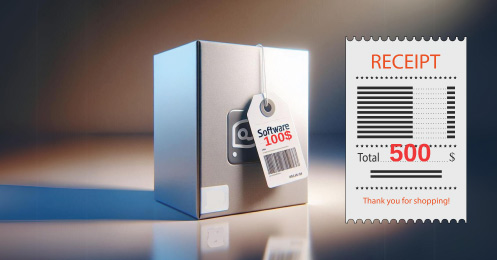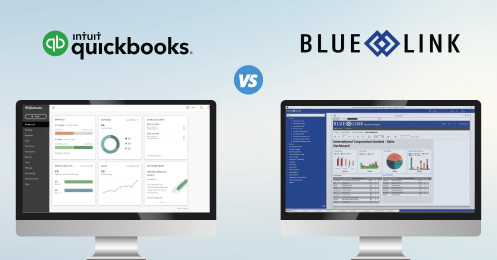Businesses that handle physical products need to strategize on how to efficiently handle incoming and outgoing stock. Without precise and trustworthy stock control, there is a risk of products disappearing or getting damaged, leading to financial losses.
Stock Control Explained
Stock control, often referred to as inventory control, is the process commonly used by players in the supply chain, to optimize stock quantities and track them within a warehouse. Wholesalers, distributors, retailers, manufacturers and anyone with warehousing and logistics to manage will benefit from a robust stock control strategy.
There are 3 commonly known types of inventories: Raw Materials, Work-in-Progress (WIP), and Finished Goods. Manufacturers must control all three types, while distributors and retailers only need to focus on Finished Goods. Specialized inventory management software designed for distributors and retailers can effectively manage the stock movement of Finished Goods and provide insight into the Cost of Goods Sold (COGS) to assist in future fulfillment operations.
Stock Control of Finished Goods with Inventory Management Software
Having the right systems and processes for your product and people is key to ensuring a smooth and successful order fulfillment operation and starts with the accurate tracking of stock movement.
Wholesale distributors and 3PL’s (3rd Party Logistics) warehouses dealing with large inventories are especially susceptible to stock error, and missing or damaged products causing the nature of the inventory to potentially influence control methods. Control methods can also be based on other things such as sales trends.
For example, if your inventory includes perishable items such as food, shelf-life, refrigeration and other storage requirements must be considered. On the other hand, if your inventory consists of children’s toys, you will want to organize your warehouse in a way where high-demand items sit at lower levels for easy accessibility.
Having reliable, real-time insight into these trends can help you optimize stock levels in the warehouse automatically and efficiently. Inventory Management software provides robust reporting capabilities for warehouse managers seeking to base their decisions on real data. who want to make data-driven decisions.
Depending on the sophistication of the inventory management system you choose, you can tailor it to suit your unique business needs with the ability to manage various types of stock, effectively manage and track lots, and optimize shipping processes. Automated reporting provides the real-time insight you will require to make data-driven decisions and stay ahead of the competition.
Inventory Management software purchased as a standalone system is a large investment for your business. It is encouraging to assess all departments to explore opportunities for a digital transformation. Growing businesses typically find they require more than just inventory management software, realizing the need for a comprehensive all-in-one solution that can manage multiple areas of the business.
ERP Software or Enterprise Resource Planning software includes Inventory Management functionality and the technology to manage your accounting processes, eCommerce sales (which we’ll talk more about below), sales orders and purchase orders, all in one system.
Discover the top three inventory management reports that every warehouse manager should be familiar with below.
eCommerce Fulfillment
eCommerce fulfillment centers and wholesale distributors with multiple warehouses require effective and efficient stock control to manage sales and inventory across various locations. Complex logistics as such benefit from an automated solution to streamline stock management processes and ensure accurate customer order fulfillment.
Businesses with one warehouse can also benefit from an automated solution that integrates eCommerce, marketplace, EDI and other operations all in one place.
Order Fulfillment with Limited Stock
As mentioned above, stock control strategies vary depending on the type of inventory and sales trends but businesses also deal with products that aren’t always readily available. For example, there may be a rare material that is used to create the finished product causing it only to be available at certain times of the year. Another good example is businesses that purposely deal with limited stock such as furniture retailers, who frequently only purchase the product from the supplier after it has been purchased by the end consumer.
There are a few ways you can effectively manage order fulfillment with limited stock:
Real-time Inventory Tracking (Reporting)
Real-time insights give you the most accurate view of your inventory levels. You can make the most up-to-date decisions on restocking or fulfilling orders with a reliable and integrated inventory management system with robust reporting. Inventory management is great only if you have the ability to comprehend what that data is telling you.
In the video above, Danielle talks about the Dead Stock Report. This one is great to compare the cumulative gross margin with the inventory value to see what stock is taking up space but not selling.
Pro Tip: For industries handling regulated products such as pharmaceuticals or food and beverage, opt for a system with built-in lot tracking to ensure inventory is always tied back to crucial information readily available.
Setting Limits
Stock that relies on supplier reliability, raw material availability, and demand trends should have a set stock limit to prompt notifications when levels drop below this value. This approach not only enhances customer satisfaction by reducing lead times but also allows for the possibility of implementing customer limits or allocation rules.
For example, prioritizing fulfillment orders based on allocation rules ensures that key customers receive their products promptly.
Backorder Management
The note above about furniture retailers purchasing products from the supplier after it has been purchased by the consumer is an example of a backorder. Inventory Management functionality will ensure that your stock levels align with your sales history, tracking backorders, their recipients, and delivery schedules seamlessly.
Multi-Supplier Strategy
Limited stock may be a result of raw material availability or other outside influences. Because the product may be difficult to source, distributors have the option of opting for a multi-supplier strategy. It might sound scary to now have to manage multiple suppliers, but ERP software can help you with that as well and you might even get a price break if you shop around for the right supplier.










